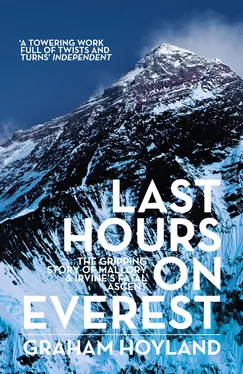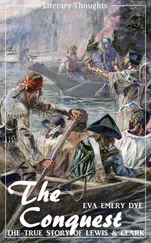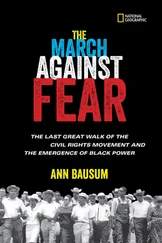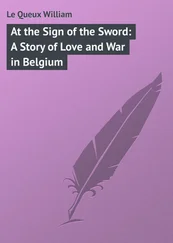I know that, again and again, when, sick of casualties and the wilfulness of man that maims these poor bodies, I did see an unselfishness, a fine spirit, and a comradeship, that I have never seen in peace-time. But in spite of all that, the very gloriousness of the spirit of man is a call to the nations to renounce war and give love a chance to bring forth the best that is in mankind. 4
Note the reference to the spirit of man. The Poet Laureate Robert Bridges chose The Spirit of Man as the title for an anthology of prose and poetry, published in 1915. It is a curious book, written during the war under the auspices of the War Propaganda Bureau, and full of exhortations to self-sacrifice. ‘We can therefore be happy in our sorrows,’ writes Bridges, ‘happy even in the death of our beloved who fall in the fight; for they die nobly, as heroes and saints die; with heart and hands unstained by hatred or wrong.’ 5Mallory and Somervell were to read selections from the book as they lay in their shared tent on Everest in 1922.
It was not noble to die chopped up by a machine-gun or gassed. The Spirit of Man was an encouragement towards self-sacrifice. Like the older members of my family, these men had a culture of public-spiritedness and Christian unselfishness that would be inconceivable to most of today’s Everest climbers. I think it might have influenced the climbing choices that Mallory and Somervell made, and partly explains the extreme guilt they felt when seven Sherpas died in the accident that ended that expedition of 1922, a guilt I have rarely seen in the carnage of a modern Everest season.
The casualty work was exhausting, and on one occasion Somervell had to operate for two and a half days on end, without sleep. One day during the Somme campaign he went for a short walk on the battlefield and sat down on a sandbag. He saw a young lad asleep in front of him, looking very ill. After a while, with horror, he realised what he was looking at:
My God, he’s not breathing! He’s dead! I got a real shock. I sat there for half an hour gazing at that dead boy. About eighteen … For a moment he personified this madness called War … Who killed him? The politicians, the High Command, the merchants and financiers, or who? Christian nations had killed him by being un-Christian. That seemed to be the answer.
Somervell’s view was that the two world wars were simply one prolonged war, with the failure of the Versailles Treaty to curtail German aggression meaning that it reasserted itself during the 1930s. Somervell felt that if Germany had been occupied and stabilised, the horror and madness of the Third Reich could have been contained.
A few miles away, Mallory’s experience as an artillery officer was somewhat different, as he would not have seen as much of the bloody consequence of shelling as would a surgeon. Although the two men’s roles were different, the common experience of the Great War formed a similar outlook and cemented their later friendship.
It is difficult to exaggerate the effect the conflict would have had on those survivors of the Great War. Gas was used on the Somme on 18 July:
Gas! Gas! Quick, boys! – An ecstasy of fumbling,
Fitting the clumsy helmets just in time;
But someone still was yelling out and stumbling,
And flound’ring like a man in fire or lime …
Dim, through the misty panes and thick green light,
As under a green sea, I saw him drowning.
In all my dreams, before my helpless sight,
He plunges at me, guttering, choking, drowning.
If in some smothering dreams you too could pace
Behind the wagon that we flung him in,
And watch the white eyes writhing in his face,
His hanging face, like a devil’s sick of sin;
If you could hear, at every jolt, the blood
Come gargling from the froth-corrupted lungs,
Obscene as cancer, bitter as the cud
Of vile, incurable sores on innocent tongues,
My friend, you would not tell with such high zest
To children ardent for some desperate glory,
The old Lie; Dulce et Decorum est
Pro patria mori.6
Wilfred Owen, the author of this poem, was losing his Christian faith by the time he was killed, just a week before the end of the war. Arthur Wakefield, another Lake District surgeon at the Somme who experienced the same horrors as Somervell, and who also went to Everest, completely lost his faith. So did another Everester, Odell, who was also at the Somme. Many others lost their confidence in the solidity of things, and perhaps those first attempts to climb Mount Everest tried to put things right for an empire that had taken such a grievous battering.
For Howard Somervell, however, the horrific work somehow made his faith stronger, not weaker. His sons both said to me that it was the most important thing about him; it was the key to his character.
After the war Somervell resumed climbing. He went to Skye in June 1920 and made the first solo traverse of the Cuillin Ridge, from Sligachan to Gars Bheinn at the south end. I have done this route – but not all in one day – and it is a tough proposition. Like others of Somervell (and Mallory’s) climbs that I have repeated, it is surprisingly extended and sometimes poorly protected – that is to say, the rope running out behind the leader goes a long way back to an attachment to the rock, and those attachments are not very secure.
We modern climbers like to think we are better than our predecessors because we do harder climbs, but when we strip out the technology we realise they were probably tougher and braver. They lived harder lives in unheated houses, and maybe just walked more than we do.
After Skye, Somervell returned to the Alps in 1921, where he climbed nearly 30 Alpine peaks in one holiday. Here he was accompanied by Bentley Beetham, who went to Everest in 1924. He climbed in the Alps with Noel Odell and Frank Smythe a couple of years later, and these trips were a way of testing climbers for an Everest expedition. Some modern pundits tell us that these men formed an exclusive upper-class clique devoted to keeping colonials and the lower classes out of their club, but I think they just chose to climb with congenial people they knew, just as the rest of us do. Later on, Irvine was selected, because he also knew Odell. Then Somervell thought his big chance had come:
Everyone who is keen on mountains … must have been thrilled at the thought – which only materialised late in 1920 – that at last the world’s highest summit was going to be attempted. And by no means the least thrilled was myself … I had at least a chance of being selected to go on an expedition which was then being planned for 1921.7
Somervell applied to join the 1921 reconnaissance expedition to Mount Everest, but was not chosen. However George Mallory was taken, as he was considered the foremost alpinist of the day. They did not know each other well at that stage since Somervell had gone up to Cambridge after the older man. So, for the moment Howard Somervell had to stand on the sidelines and watch.
Конец ознакомительного фрагмента.
Текст предоставлен ООО «ЛитРес».
Прочитайте эту книгу целиком, купив полную легальную версию на ЛитРес.
Безопасно оплатить книгу можно банковской картой Visa, MasterCard, Maestro, со счета мобильного телефона, с платежного терминала, в салоне МТС или Связной, через PayPal, WebMoney, Яндекс.Деньги, QIWI Кошелек, бонусными картами или другим удобным Вам способом.












